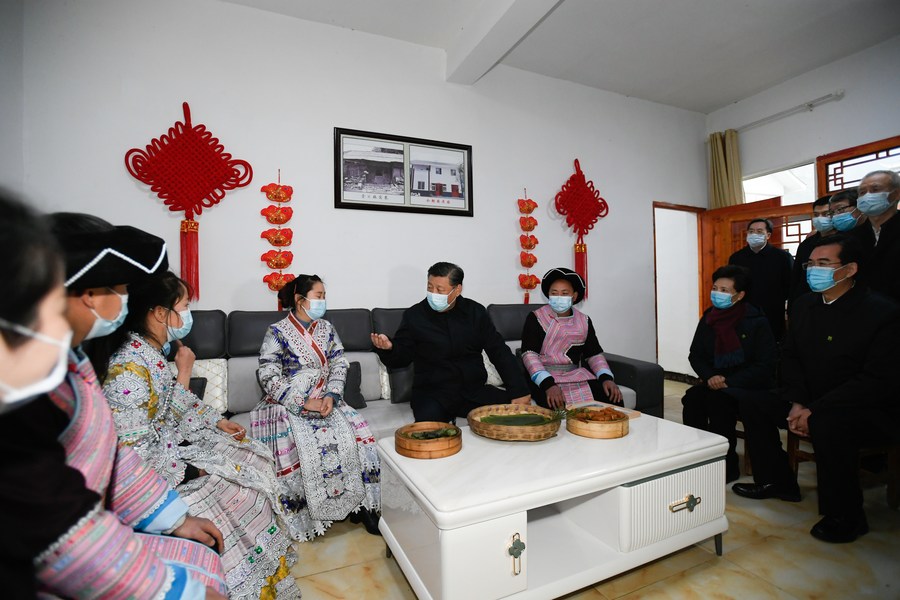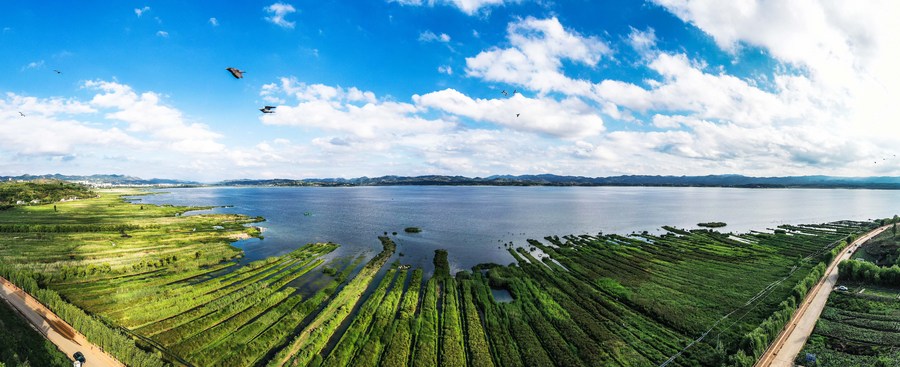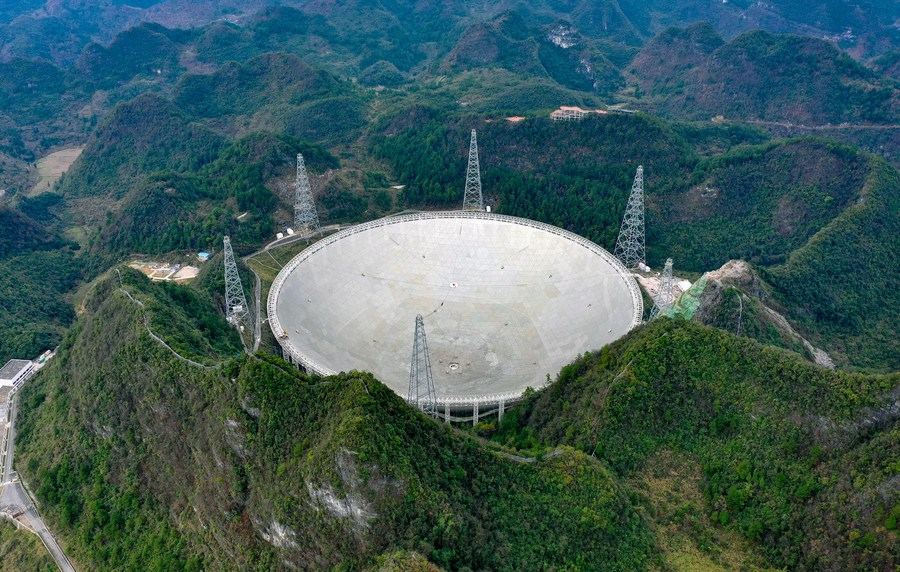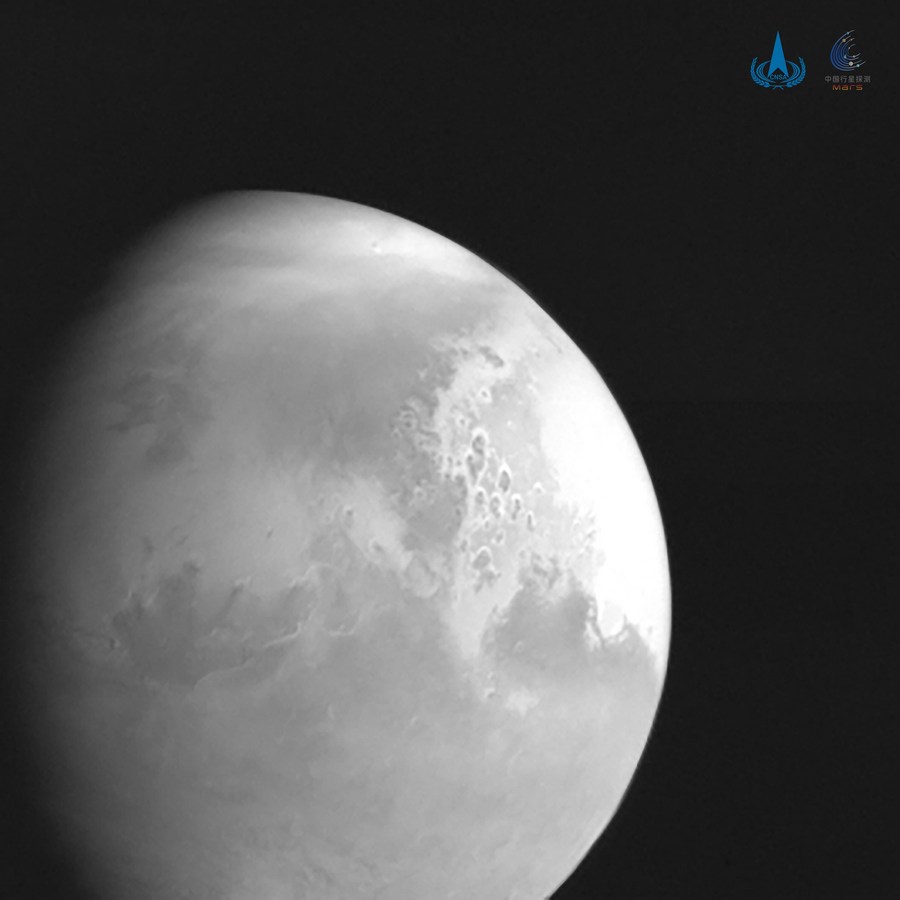

-- Xi requires all CPC members to put people's interests first.
-- The focus of China's work concerning agriculture, rural areas and farmers has shifted from poverty eradication to promoting rural vitalization.
-- Xi emphasizes prioritizing ecological conservation and green development.
-- Xi asks scientists to scale the heights of global science.
BEIJING, Feb. 6 (Xinhua) -- About a week ahead of the Spring Festival, or the Chinese Lunar New Year, President Xi Jinping made a three-day inspection trip to southwest China's Guizhou Province.
During the trip, he visited villagers and community residents, checked the water quality of a river and talked to scientists of China's signature single-dish radio telescope.
Xi, who is also general secretary of the Communist Party of China (CPC) Central Committee and chairman of the Central Military Commission, wished happiness and good fortune for the people and prosperity for the nation in the Year of the Ox, which begins on Feb. 12.
The Year of the Ox marks a historic juncture for China as it embarks on a new quest to fully build itself into a modern socialist country. Here are some key takeaways from Xi's trip that may provide some insights into China's development trajectory.
PEOPLE MATTER MOST
The Party's fundamental purpose is to serve the people wholeheartedly. Xi has always required all CPC members to put people's interests first. As the Party's top leader, Xi himself visited ordinary people, the disadvantaged groups in particular, in his pre-Chinese New Year inspections for nine years in a row.
On Wednesday, Xi went to a once poor village in an ethnic Miao township and made a house call on villager Zhao Yuxue. He checked the family's living conditions and joined them to make a traditional snack for festivals. The next day, Xi went to a supermarket in the provincial capital Guiyang, checking the supply of goods for the Spring Festival holiday and their prices.

Chinese President Xi Jinping, also general secretary of the Communist Party of China Central Committee and chairman of the Central Military Commission, visits villagers of Huawu Village, Xinren Miao Township of Qianxi County, Bijie, southwest China's Guizhou Province, Feb. 3, 2021. (Xinhua/Li Xueren)
"The president encouraged us to make concrete efforts in our jobs and offer goods to people at more affordable prices," said Guan Mei, a manager of the supermarket.
At the supermarket, Xi particularly demanded strengthened anti-epidemic measures and food safety supervision to ensure the people have a happy holiday.
"He is the one who cares most about the common people," Zhao, the ethnic Miao villager, said of Xi.
REVITALIZE COUNTRYSIDE
Over the past eight years, China lifted nearly 100 million rural poor out of poverty, securing a decisive victory in ending absolute poverty.
For the way forward, Xi's Guizhou trip signals that the focus of the country's work concerning agriculture, rural areas and farmers has shifted from poverty eradication to promoting rural vitalization.
By choosing Guizhou, home to the last nine counties removed from the country's poverty list, Xi wanted to see in person the living conditions of those who had shaken off poverty, and promote steady progress in rural vitalization, a strategy stressed by the Party at its 19th national congress in 2017 to revamp the countryside.
Good and stable local jobs that enable farmers to stay in the countryside are an important part of it.
During his visit to an ethnic Miao embroidery workshop, Xi hailed its role in promoting rural vitalization.

Local women make embroidery works at a workshop in Shibing County of Qiandongnan Miao and Dong Autonomous Prefecture, southwest China's Guizhou Province, Jan. 21, 2021. (Photo by Cai Xingwen/Xinhua)
"Thanks to the good policies, we villagers can now be employed at our doorsteps," said Peng Yi, an artisan at a local embroidery company.
GO GREEN
The environment has been a constant concern for Xi over the past years. He has visited rivers, mountains and natural reserves across the country as part of his inspection itineraries.
On Wednesday, Xi visited a section of the Wujiang River, one of the biggest tributaries of the upper Yangtze River. Checking the ecological environment and water quality of the river, Xi emphasized blazing a new path that prioritizes ecological conservation and green development.

Panorama photo taken with a drone shows the Caohai National Nature Reserve in the Yi, Hui and Miao Autonomous County of Weining, southwest China's Guizhou Province, June 9, 2020. (Xinhua/Yang Wenbin)
A key component of the new development philosophy, green development has been underscored for China's development blueprint in the next five years and through to 2035, at a key Party plenum last year.
During the trip, Xi told provincial officials that an excellent ecological environment is Guizhou's biggest development strength and competitive edge, reiterating the role of ecological conservation and green development.
SKY IS NOT EVEN THE LIMIT
When it comes to science and technology, there is no limit for the country's scientists to pursue excellence.
During the trip, Xi met with the project leaders and core scientists of China's Five-hundred-meter Aperture Spherical Radio Telescope (FAST), the world's largest single-dish radio telescope, and called on scientists to scale the heights of global science.

Photo taken on Jan. 11, 2020 shows China's Five-hundred-meter Aperture Spherical Radio Telescope (FAST) under maintenance in southwest China's Guizhou Province. (Xinhua/Liu Xu)
He called the scientists to make new and greater contributions to developing China's scientific and technological strength at a faster pace and realizing the country's self-reliance and self-improvement in science and technology.
Innovation is expected to play a central role in driving China's modernization.
The country has lately performed an array of feats thanks to its science and technology development strategy. It launched the Mars probe Tianwen-1 on July 23, 2020, kicking off the country's independent planetary exploration mission. The China National Space Administration on Friday released the first image of Mars captured by the Mars probe.

Photo released by the China National Space Administration (CNSA) on Feb. 5, 2021 shows the first image of Mars captured by Mars probe Tianwen-1 from a distance of 2.2 million km. (Xinhua)
FAST, which is tasked with the ultimate goal of revealing more about the universe, is scheduled to be available for scientists across the world from April 1, 2021. In the first year of the telescope's opening to the global scientific community, about 10 percent of the observation time will be allocated to foreign scientists.
"We will keep making efforts to ensure that all our astronomical facilities are of top-level globally," said Jiang Peng, chief engineer of FAST and researcher at the National Astronomical Observatories of China.

 Award-winning photos show poverty reduction achievements in NE China's Jilin province
Award-winning photos show poverty reduction achievements in NE China's Jilin province People dance to greet advent of New Year in Ameiqituo Town, Guizhou
People dance to greet advent of New Year in Ameiqituo Town, Guizhou Fire brigade in Shanghai holds group wedding
Fire brigade in Shanghai holds group wedding Tourists enjoy ice sculptures in Datan Town, north China
Tourists enjoy ice sculptures in Datan Town, north China Sunset scenery of Dayan Pagoda in Xi'an
Sunset scenery of Dayan Pagoda in Xi'an Tourists have fun at scenic spot in Nanlong Town, NW China
Tourists have fun at scenic spot in Nanlong Town, NW China Harbin attracts tourists by making best use of ice in winter
Harbin attracts tourists by making best use of ice in winter In pics: FIS Alpine Ski Women's World Cup Slalom
In pics: FIS Alpine Ski Women's World Cup Slalom Black-necked cranes rest at reservoir in Lhunzhub County, Lhasa
Black-necked cranes rest at reservoir in Lhunzhub County, Lhasa China's FAST telescope will be available to foreign scientists in April
China's FAST telescope will be available to foreign scientists in April